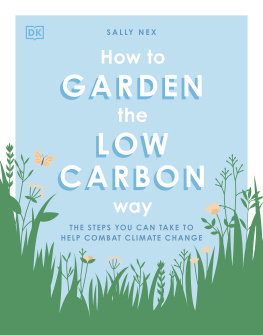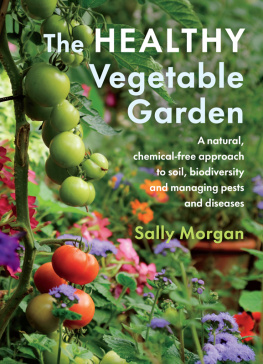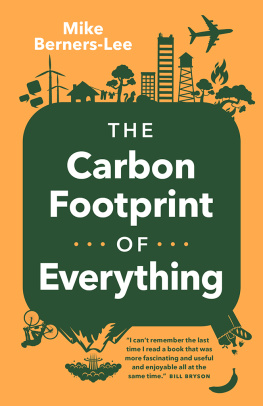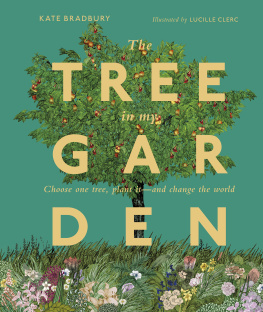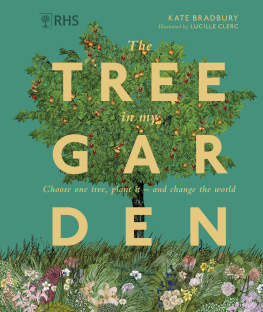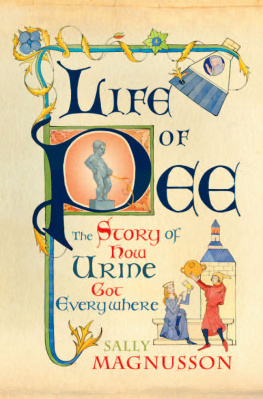Sally Nex - How to Garden the Low Carbon Way
Here you can read online Sally Nex - How to Garden the Low Carbon Way full text of the book (entire story) in english for free. Download pdf and epub, get meaning, cover and reviews about this ebook. year: 2020, publisher: DK Publishing, genre: Children. Description of the work, (preface) as well as reviews are available. Best literature library LitArk.com created for fans of good reading and offers a wide selection of genres:
Romance novel
Science fiction
Adventure
Detective
Science
History
Home and family
Prose
Art
Politics
Computer
Non-fiction
Religion
Business
Children
Humor
Choose a favorite category and find really read worthwhile books. Enjoy immersion in the world of imagination, feel the emotions of the characters or learn something new for yourself, make an fascinating discovery.
How to Garden the Low Carbon Way: summary, description and annotation
We offer to read an annotation, description, summary or preface (depends on what the author of the book "How to Garden the Low Carbon Way" wrote himself). If you haven't found the necessary information about the book — write in the comments, we will try to find it.
How to Garden the Low Carbon Way — read online for free the complete book (whole text) full work
Below is the text of the book, divided by pages. System saving the place of the last page read, allows you to conveniently read the book "How to Garden the Low Carbon Way" online for free, without having to search again every time where you left off. Put a bookmark, and you can go to the page where you finished reading at any time.
Font size:
Interval:
Bookmark:


Preferred application settings
For the best reading experience, the following application settings are recommended:
- Orientation: Portrait
- Colour theme: White background
- Scrolling view: [OFF]
- Text alignment: Auto-justification [OFF](if the eBook reader has this feature)
- Auto-hyphenation: [OFF](if the eBook reader has this feature)
- Font style: Publisher default setting [ON](if the eBook reader has this feature)
g
INTRODUCTION
Imagine a habitat of extraordinary diversitycapable of holding more plant varieties per square foot than a rainforest, as well as all kinds of wildlife. Sounds pretty amazing, doesnt it? And its right outside your back door.
Every one of our gardens is a microcosm of natural habitats in concentrated form. Yet theyre rarely considered for their potential input to the wider environment, overlooked in the rush to study more romantic woodlands or meadows.
Least studied of all, it seems, is the role gardens may play in regulating our climate and how gardeners might potentially be able to help them. Each and every garden is a tiny carbon sink, with every plant busily vacuuming carbon dioxide from the air, then locking it away for years.
Nobodys ever worked out how much carbon our gardens are capable of absorbing each year. We do know how much they hold already though: one estimate puts the amount of carbon tucked away in the top feet of garden soil at up to 160 tons (145 tonnes) of carbon per 2 acres. So the UKs million acres of gardens alone already lock away over 68 million tons (62 million tonnes) of carbon, and with our help, they can sequester (capture and store) more.
As gardeners, we have a chance to make a direct, practical difference in combating climate change. Every time you grow a tree, mulch your soil, or let your grass grow long, you could actively be increasing the carbon your garden absorbs.
Too often though, we return all that carbon dioxide right back into the atmosphere by firing up a gas-powered mower, filling pots with peat-based compost, or scattering artificial fertilizers. So low-carbon gardening needs a twin approach. Lower your carbon emissions to neutral by gardening sustainably, with a light touch, then maximize the carbon your garden sequesters and stores and help it actively combat climate change.

ABOUT THIS BOOK
The world of greenhouse gas emissions is mind-bogglingly complex for most scientists, never mind a simple gardener. Throughout this book, the focus is mainly on carbon dioxide emissions, but other greenhouse gases such as nitrous oxide or methane have a part to play, too. So Ive occasionally adopted a widely used shorthand and use carbon dioxide as a catch-all to include several types of climate-changing greenhouse gases.
The frustratingly limited research into carbon sequestration and emissions in a domestic garden setting has also driven me to extrapolate many statistics from studies carried out in related but better-funded areas such as agriculture and forestry. So such figures are rough equivalents rather than precise representations.
And, finally, not everyone will be able or in fact want to take the deep green approach outlined on some of these pages. Gardening sustainably is a journey, and its fine to start small and work up to the bigger changes later. The important thing is that everyone does something. A billion tiny actions have brought us to a point where the planet teeters on the edge of environmental crisis. And a billion tiny actions can pull us back from the brink.
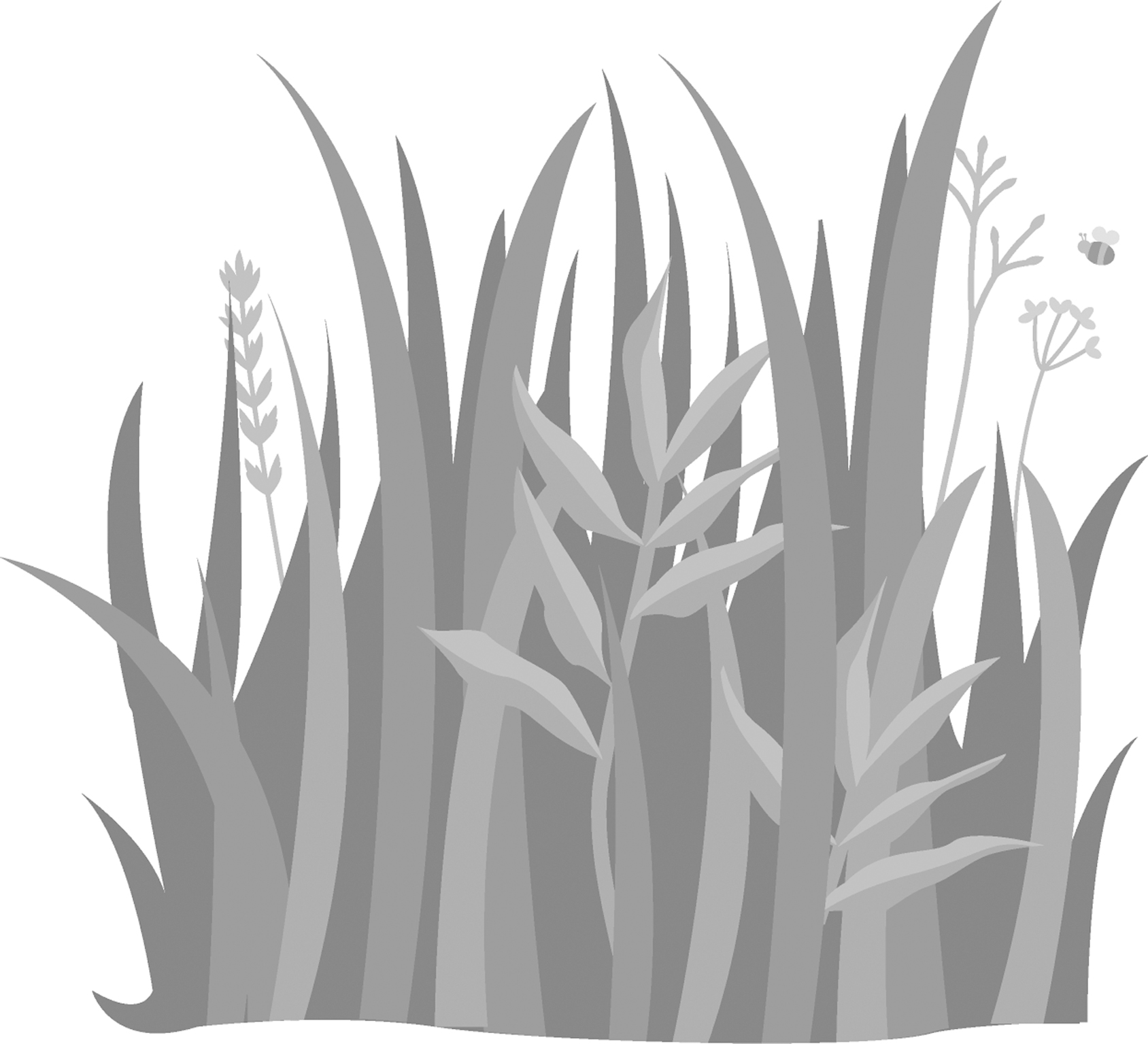
A billion tiny actions have brought us to the edge of environmental crisis. And a billion tiny actions can pull us back from the brink.
THE UKS MILLION ACRES OF GARDENS ALONE ALREADY LOCK AWAY OVER 68 MILLION TONS (62 MILLION TONNES) OF CARBON.
g
HOW PLANTS ABSORB CARBON
No matter how small your garden, no matter how humble, it has its tiny but important part to play in the great interconnected machinery that keeps our planet and its climate able to support life.
Plants rule the world. Pound for pound, they are by far the dominant life-form on Earth, accounting for about 80 percent of the worlds biomass. (Bacteria come a distant second at 15 percent.)
Thats good news for us as we pump ever more greenhouse gases into the atmosphere, because plants can take them out again. Cars, airplanes, and factories burn fossil fuels for energy, releasing carbon dioxide into the atmosphere. But plants absorb, or sequester, carbon dioxide from the atmosphere in a process called photosynthesis, turning it into sugars. They then store it in woody stems; roots; and, later, decayed plant matter in soil, locking it out of the atmosphere for many years.
As gardens now offer the last safe refuge for plants in those areas of the world where humans have taken away all other vestiges of nature, our plant-filled backyards have an increasingly significant role in combating climate change.
THE CARBON CYCLE
Plants absorb carbon from the air, sequester it in their living tissues, and then store it in the ground.
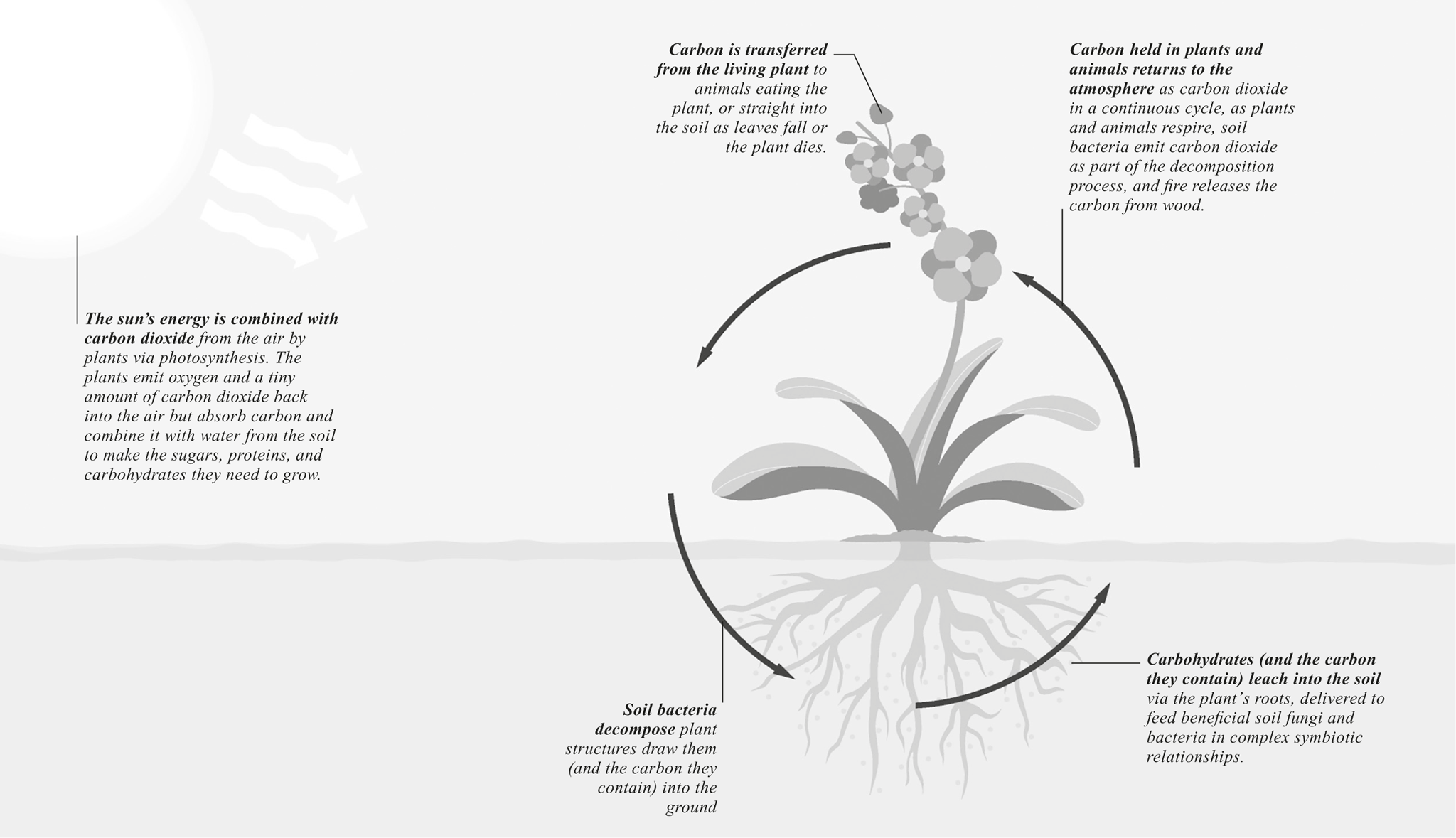
The earths climate stays in equilibrium as long as the cycle is in balance, with as much carbon dioxide absorbed as released. Pump more carbon dioxide into the atmosphere than is absorbed, however, and the climate loses its delicately poised balance and starts to warm.
g
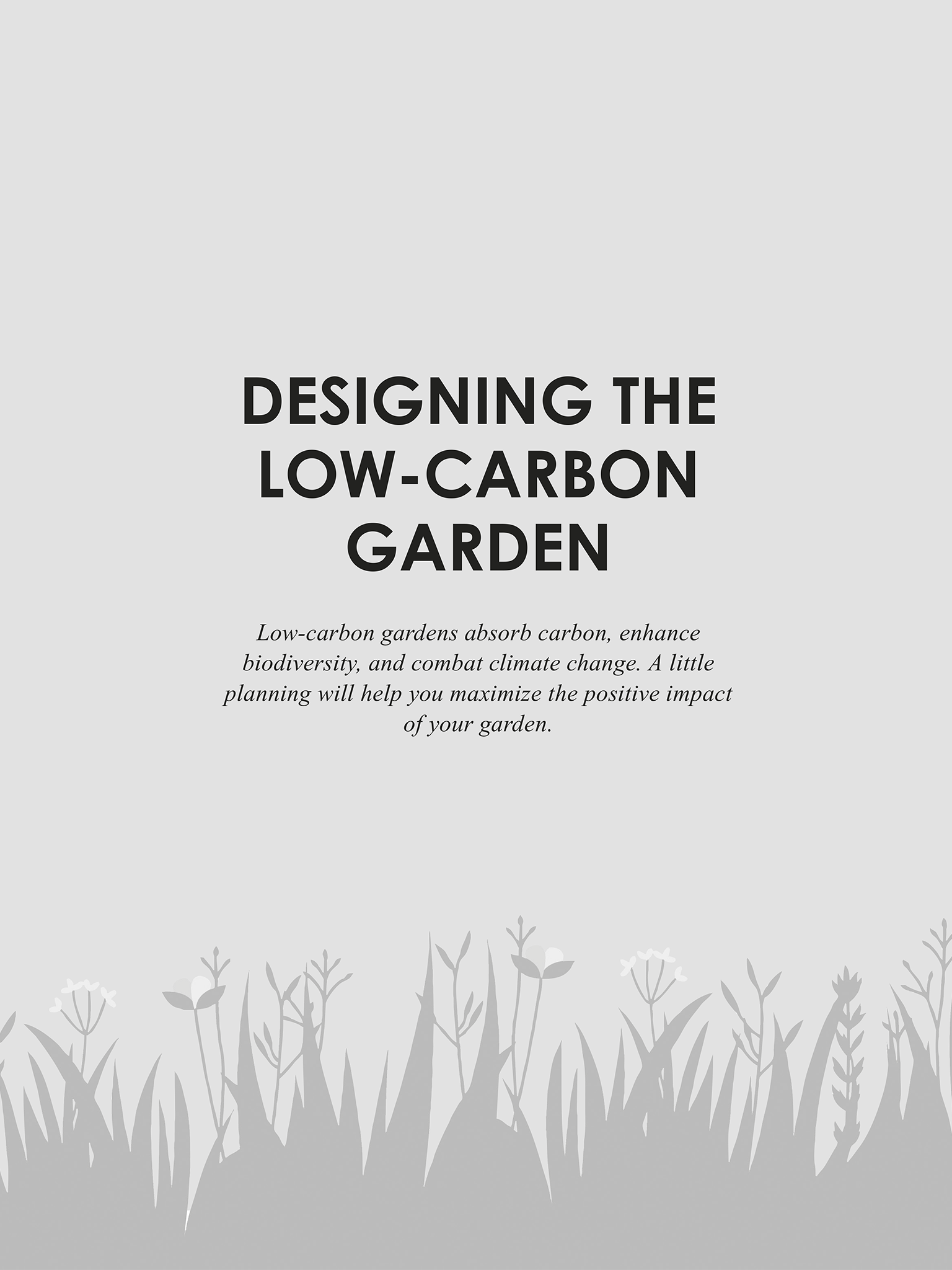
How to Garden | The Low Carbon Way
g
THE LOW-CARBON GARDEN
A low-carbon garden buzzes with life, sparkles with water, and is packed with plants. If designed well, it can act as a carbon sink and actively combat climate change.
SMALLER SPACES
If space in your garden is restricted, any element from this design can be borrowed and adapted to fit a smaller garden.
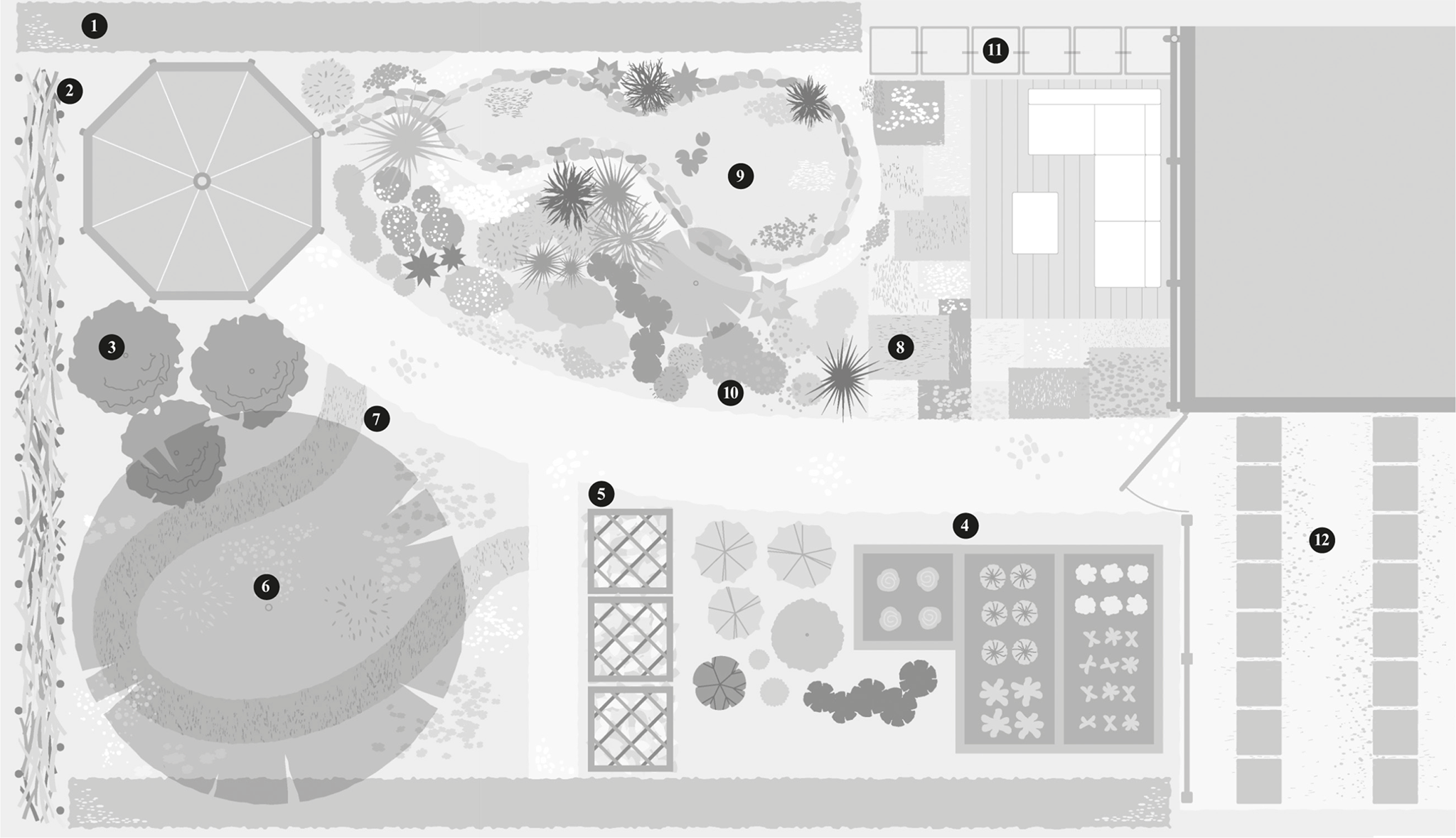
1 Hedges actively sequester and store carbon, as well as providing nesting sites, food sources, and shelter for wildlife.
2 Fedges will serve as somewhere to stack woody garden waste while it slowly rots down, providing shelter for wildlife, too.
3 Coppices of hazel trees provide a renewable, carbon-free source of beanpoles and pea sticks, as well as a wildlife habitat.
4 Vegetable gardens
Font size:
Interval:
Bookmark:
Similar books «How to Garden the Low Carbon Way»
Look at similar books to How to Garden the Low Carbon Way. We have selected literature similar in name and meaning in the hope of providing readers with more options to find new, interesting, not yet read works.
Discussion, reviews of the book How to Garden the Low Carbon Way and just readers' own opinions. Leave your comments, write what you think about the work, its meaning or the main characters. Specify what exactly you liked and what you didn't like, and why you think so.

